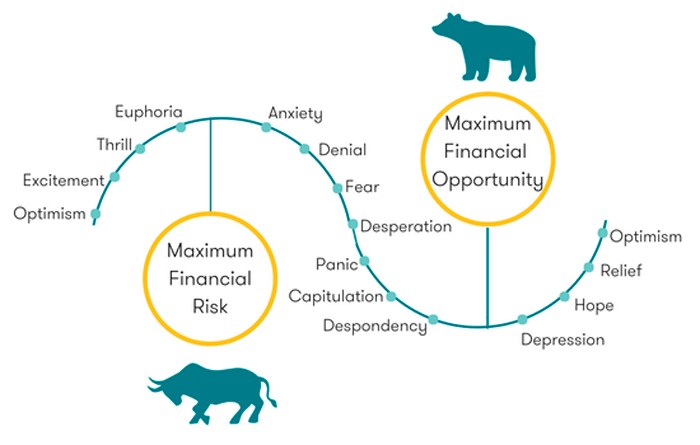How do you feel about financial markets – do you think they will rise or fall in the future? The answer to this question depends on how emotionally you feel about this topic.
Financial markets are driven by emotions and this is one of the main reasons why investors can find trading opportunities.
Taking stocks as an example, one of the main reasons a stock’s price does not match a company’s book value is because investors’ expectations are more optimistic than the reality.
Trade high only with a leading broker
This shows the importance of emotions for the market, but for the full picture, one should not forget about the use of technical and fundamental analysis .
Understanding the psychology of the market is one thing, but making the decision to open trades is quite another. Because the market always has a completely different mindset than what you want, what you expect.
What is market sentiment?
Содержание статьи:
The mood of the market reflects the situation in the financial markets and the general mood among traders, whether it is trading in the Forex market, the stock market or something else. Understanding this will help you gauge how bullish or pessimistic the market is.
At the same time, we can say that if the market feels positive and optimistic, this is a bull market , in the case when traders are pessimistic and do not see prospects, this is a bear market :
In fact, measuring market sentiment is quite difficult because market outlook is shaped based on many factors. Therefore, investors need to use various types of analysis, only in this way it will be possible to create a complete picture.
In addition, while most of the market will lean one way or the other, each participant has their own opinion about why the market is behaving the way it is behaving, and what the next trend is.
One of the key factors in using market sentiment to trade is being able to predict the upcoming trend, and this is where fear and greed come into play.
Trading emotions: greed and fear
The prevailing mood in the market often determines the general mood of the market. Most investors tend to follow the general price trend. The biggest mistake is to make transactions under the influence of fear and greed without taking into account how close the price is to its maximum or minimum.
How to trade according to market sentiment?
The volume indicator can be a great guide to gauge how the market is feeling. This is especially true for stocks and options:
For example, if the price of a company’s stock continues to rise, but the trading volume begins to decrease, this fact may be a sign that the stock has entered an overbought state. Download volume indicator
Position indicators are also one of the most useful tools to assess the current market trend and whether it is pessimistic or optimistic.
However, it should be noted that these indicators should only be used in combination with fundamental and technical analysis, this will allow you to get a clearer picture of the market.
Some of the tools used by investors to determine market sentiment are:
Commitments of Traders : The COT is published by the Commodity Futures Trading Commission (CFTC) every Friday and shows buy and sell positions of large traders:
This helps reveal detailed market movements based on the trading history of major players (eg hedge funds, banks and corporations).
If COT reports that many of the major players opened buy deals or, on the contrary, made sales, then we can expect a trend reversal.
Volatility Index (VIX) : Also known as the Fear Index, the VIX tracks option prices and measures volatility:
Used as a way for investors to protect themselves from any price adjustment, such as an insurance policy.
The higher the VIX, the easier it is to reverse the current trend. A low VIX indicates that market sentiment is stabilizing and the current trend will continue.
High/Low Sentiment Ratio: One of the easiest ways to tell if the market is in high spirits or in panic is the High/Low Sentiment Index (High/Low Sentiment Ratio).
It is based on comparing how many stocks are moving towards a 52-week high and how many stocks are making a 52-week low. If the mid-market direction is down, then the bears are in control – the market is down, and when the bulls are in control – the market is up.
Thus, there are many ways to measure market sentiment to help traders speculate and stay one step ahead of the market before big events happen.
Investors should try to assimilate as much information as possible. Listen to both bulls and bears, only this will allow a complete picture of market sentiment.


